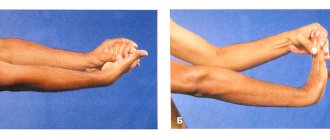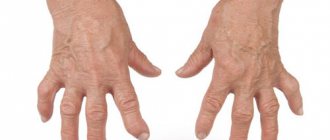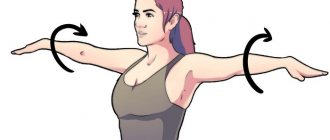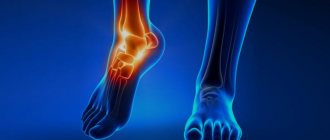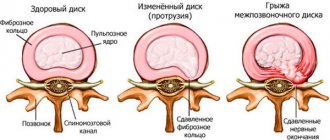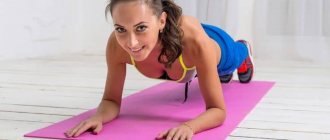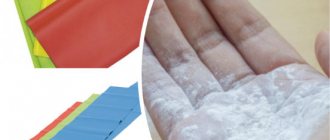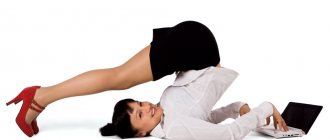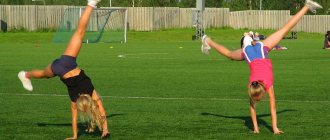Our hands work every day. But we pay very little attention to the condition of the ligaments, the health and skin on them. This comes back to us with a feeling of constant tension in the hands, cracking joints, as well as a deterioration in appearance. Exercises for the fingers and hands (physical therapy) will help solve these problems.
This is a solution to emerging problems, an excellent prevention of diseases of the joints and ligaments, while for children they are a mechanism for the development of fine motor skills, speech, attention and memory. During rehabilitation, exercises for the hands and fingers are used in the following cases: stroke, traumatic brain injury.
No special conditions are required for their implementation. Exercises to strengthen your hands and fingers can be done even while sitting at a table. In order to increase their effectiveness, follow simple rules:
- do all the complexes at the same pace with both hands;
- perform exercises systematically and regularly;
- do a couple of repetitions of the complex during the day;
- without holding your breath, breathe freely;
- concentrate on each exercise, do not get distracted.
Tibetan monks began every morning by doing exercises for their hands and fingers. They recognized them as a miraculous method for restoring the flow of energy, in addition, they considered them a source of maintaining the necessary vitality. The presence of a huge number of reflex cells on the palms serves as scientific confirmation of this fact.
Relieving fatigue
These exercises for fingers and hands are recommended for people who work at a computer keyboard for a long time or fill out a lot of paperwork by hand. It is even better for each person to perform these exercises every day to maintain youthful skin, as well as maintain healthy joints. Consider exercises for fingers and hands:
- Physical education begins with the hands clenching into a fist. In this form, they need to be rotated in each direction 10 times.
- Clench your hand tightly into a fist and hold in this position for a few seconds. Relax your hand. Same number of repetitions.
- Pull the brush towards you as much as possible, then away from you. Do this with each hand 5 times.
- Make a fist, clench and unclench your fingers alternately so that all the others are motionless.
- Place the brushes on a hard surface. Lift each finger in turn, without lifting the others.
Such easy exercises for the fingers and hands serve as an excellent prevention of joint diseases and relieve fatigue.
Types of exercises
Depending on the purpose for which finger gymnastics is performed, it is used for:
- increasing flexibility;
- strength development;
- people who work a lot at the computer;
- strengthening the skeletal system;
- treatment of arthrosis, arthritis and other diseases;
- gymnastics for numb hands at night.
Exercises for flexibility
Take a straight position, spread your legs shoulder-width apart and put your hands behind your back, joining them in a lock. The torso is tilted slightly forward and, with a deep inhalation, the limbs are pulled up, turning the palms outward. Having reached the maximum point, they are fixed in that position for 10 seconds. As you exhale, return to the initial state.
All fingers are carefully bent towards the back of the palm. After this, you need to quickly and strongly clench and unclench your fist.
Hands are placed together. One hand is relaxed, the other begins to slowly and carefully press on it for 15-20 seconds, after which they change limbs.
Note! Hand flexibility can be increased by clenching and unclenching the palm while holding a golf or tennis ball.
The arms are extended straight in front of you and the palms are pressed together. The hands are lowered a little lower, placing the elbows parallel and moving them a little forward. It is necessary to hold in this state for about 10 seconds and turn your hands away from you.
Development of hand movements
Straighten your arms in front of you and alternately bend your hands with your fingers up and down. You need to stay in each position for 10-15 seconds, then take a 5-second break.
Stand in a straight position, stretch your legs shoulder-width apart. Stretch them in front of you, bending them at the elbows. One hand is clenched into a fist, and the palm of the free limb is clasped around this fist. In this position, you need to stretch your arms forward and hold at the maximum point for 10 seconds.
Exercises for strength
The simplest strength element of finger gymnastics is finger pull-ups. More difficult are finger push-ups. The procedure is performed carefully, trying not to damage the joints. At the same time, the fingers are folded in the shape of an extended bowl. As you complete the exercise, you can modify it as follows:
- focus on one hand;
- reduce the number of supporting fingers;
- place your feet on additional support.
Hands lower down and grab a bucket filled with water. Then the container is lifted up and fixed at the level of the navel. As strength qualities develop, the volume of liquid lifted should be increased. For the same purpose, you can throw up a cannonball taken with a grip from above. The mass and size of the core should gradually increase.
Note! A stick is driven into the ground a short distance, then pulled out from there. In this case, it is necessary to use only the strength of the fingers.
The fingers are spread wide and hit into a dense surface. At first, bags of cereal are used as an object for applying force. As the fingers become stronger, bulk materials are replaced with wood, cardboard, and plywood sheets.
Exercises while working at the computer
In this case, a whole set of simple exercises is carried out, which are repeated 5-6 times in a row:
- Relax your hands, shake them in the air, alternately spreading them in different directions and lifting them up.
- Squeeze your palms closer to each other and move each finger back from this position until it stops.
- Stretch both arms forward and rotate your hands in different directions and inward.
- Tuck your elbows to your sides and place your palms forward. Open and close the fingers to the phalanges in turn.
- Stretch your arms up and forcefully clench your fingers into fists, then unclench them.
- Place your palms next to each other in front of your chest, pressing hard on the ends of your fingers, tilting your hands to the left and right.
- Secure your arms in a half-bent position, while squeezing and unclenching your fingers with force.
- Interlace your fingers together and apply compressive pressure.
- Place your elbows tightly to your sides, clench your fingers into fists and rotate your hands in both directions.
If the exercises have been performed correctly, upon termination you will feel lightness in your hands, peace and relaxation. The blood supply to the fingers and hands becomes better.
Recovery and strengthening
Exercises to strengthen bones
To strengthen the bones and thereby strengthen the arms and increase their mobility, perform the following actions:
- Grab the palm of the other hand with your hand and pull it left and right. Perform 5-10 repetitions on each limb.
- Form your hands into a fist and carefully bend them forward and back at the wrist until you feel a stretch.
- Place the palmar edge on a hard surface and bend each finger in turn as much as possible.
Exercises for illnesses
The simplest effective exercises for the treatment of arthritis and arthrosis are opening and clenching the fist. Following this, they usually move on to the development of the thumb. With its tip you need to reach all other fingers on your hand. After this, the hand is placed on the table and the fingers begin to alternately move and separate.
Important! This exercise must be performed with effort.
The hands are left in the same position on the table, but now they begin to lift each of the fingers up in turn. To increase efficiency, each raised finger must be rotated in different directions. The procedure can be supplemented by compression and extension of the middle and nail phalanges of the fingers.
Some exercises involve a stick. It is placed on the table and rolled with the palm from the fingertips to the wrists. They also practice passing a stick vertically between the palms. You can use a pencil as a stick, if possible a ribbed one, not a round one. Tennis balls are also used, which are rolled with the palm of the hand on the table in measured circular movements.
Gymnastics for numb hands
Regardless of the cause, if your arms and legs are numb, the treatment is gymnastics. In this case, perform such exercises as:
- The arm is pulled forward, bent at the elbow, and they begin to rotate it towards the chest. The hands can be left relaxed or clenched into a fist.
- The arm is extended diagonally parallel towards the floor. Having bent it at the elbow, they begin rotational movements towards the chest.
- The hands are folded into a lock and rotated in different directions without unclenching the fingers. This prevents your fingers from going numb.
Tendon exercises
Performed as follows:
- Starting position: fingers closed, palms open. We spread our straight fingers apart (“spread”) and close them at the same time. You need to do 10 repetitions.
- Starting position: fingers closed, palms open. We move our fingers away from each other one by one, starting with the little finger and ending with the index finger. We close everything together in one movement. A total of 10 repetitions are needed.
- Starting position: fingers closed, palms open. We close and spread fingers 2 at a time - the middle and ring fingers, with the index finger fitting tightly to the middle finger, while the ring finger is close to the little finger. Need 10 reps.
Hitch
After productive stress, careful relaxation is necessary to avoid arm pain the next day. To do this you will need to do the following:
- Extend your arms straight in front of you and pull the outside of your hands, fingers down. Then relax your right hand while continuing to hold your left. Grab the fingers of the tense hand with the other and apply force to stretch the muscles even more thoroughly. Repeat on the other side.
- Stretch your arms forward again. Try to move your hands to the side until you feel tension in all the adductor muscles.
- Place your palms together in front of your chest. As you inhale, point your fingers down to the characteristic tension or discomfort.
- Now place your palms together behind your back. As you inhale, press your palms against each other with force. After exhaling, relax.
- Place one bent arm behind your back from above, the other from below and try to clasp them in a lock. After 5-10 seconds, lean forward, while the elbow of your upper arm should be strictly parallel to your back. Swap your hands and repeat the previous steps again.
Train this area of the limbs every 7-10 days and over time, any weights or heavy bags will give in to you with ease. Regular practice and gradual progress in difficulty will produce consistent results.
Pain in the joints of the hands can cause severe discomfort. This mainly affects people suffering from arthrosis, those engaged in manual labor (packers, pianists), office workers who spend a lot of time on computers. We have already written about why hand joints hurt and how to treat it. One of the most effective methods is gymnastics. We offer you a set of exercises for joints, which will help with already identified pathologies and will be useful for prevention.
to regularly take breaks and do exercises for the joints of your hands, since correctly selected exercises:
- relieve pain;
- stimulate cartilage restoration;
- restore metabolic processes;
- improve joint mobility with progressive arthrosis.
Extension and flexion of the fingers in the phalanges
The exercises are performed as follows:
- The initial position is that the fingers are bent at the phalanges and closed, with the tips reaching towards their bases. Bend and straighten all fingers at the same time. The exercise should be performed as quickly as possible, simultaneously and synchronously on both hands.
- Starting position: fingers closed, palms open. Bending in the phalanges, with each finger in turn - bending from the index finger to the little finger, unbending in the opposite direction. For this exercise for the fingers and hands, regular training requires achieving precise execution. In this case, each finger is able to work separately from the hand, without “pulling” the other fingers along with it.
- The initial position is that the fingers are bent at the phalanges and closed; the tips extend to the bases. We straighten and bend each finger separately. It is necessary to achieve clarity in all movements.
- Initial position: fingers are bent at the phalanges and closed - the tips extend to the bases. We bend and straighten our fingers in pairs: ring fingers with index fingers, little fingers with middle fingers.
A set of special exercises for arthritis
- Clenching of fists. This is a simple movement, and as a rule, experts usually advise starting your exercises with it.
- Touch. The tip of the thumb must touch all fingers in turn.
- We place our hands with our palms on a hard surface, making spreading and connecting movements of our fingers. It is advisable to perform this exercise with some effort.
- We distribute our palms on the surface of a cabinet or table, alternately moving each finger up and down.
- Rotational movements. Make circular movements with your fingers.
- Flexion and extension of the nails and middle phalanges of the fingers on any hard surface.
Gymnastic exercises with a pencil
The palms should be placed on a cylindrical object lying on the table. We roll the pencil with our hands so that it starts moving from the beginning of the palm and ends at the fingertips. The same exercise can also be performed by holding an object between the palms of your hands and rolling it back and forth.
To perform this exercise, you don’t need to look for a special stick; a felt-tip pen or pencil will do just fine. It will be even better if you take a diamond-shaped pencil rather than a round one.
Exercises with a ball for arthritis
We alternately roll the ball on a hard surface with our left and right hands. You can also perform the motion by rolling the ball in a circle. We do this activity in different directions and with different hands. For these simple exercises, a regular tennis ball or something suitable will do.
Good results for arthritis are achieved by performing exercises with a round object made of wood. A rounded block with a diameter of no more than 5 centimeters is suitable for this purpose. You can always take it with you to work or your dacha and, if possible, complete the necessary activities.
As you can see, there is nothing complicated in these gymnastic exercises for the fingers and joints of the hands, however, performing them daily will help improve the mobility of the joints and their functionality.
Movement of each finger separately
In general, all the exercises given here for the fingers and hands are aimed at this. The main problem is the ability to move the little finger separately, while the ring finger is the most difficult. What exercises for fingers and hands are effective for working out these moments? See below:
- Starting position: hold your arms vertically, freely. We extend our fingers one at a time perpendicular to our palms.
- With this exercise, the ligament of the middle and ring fingers develops. It is very important, since this ligament is the slowest of the other muscles of the hand. This exercise is performed on each hand in turn. Initial position - we hold our hand freely, and with our middle and ring fingers we make circular smooth movements like a “bicycle” - the legs have the same trajectory when pedaling. As your fingers develop, you need to do the exercise clockwise and counterclockwise. It can cause discomfort, it is quite complex - an unpleasant pulling sensation may appear in the back of the hand. To reduce them, you can grab your wrist with your free hand and slightly move the upper layers of muscle and skin upward towards the back of the fingers.
Flexibility exercises for beautiful and healthy hands
The beauty of your hands depends on the elasticity and firmness of your skin. Therefore, you need to develop the flexibility of your hands and fingers. In addition, a set of exercises for flexibility will help prevent numbness in your hands and fingers:
- Straighten your arms behind your back and fold your hands into a lock with your palms facing away from you. Inhale deeply, bend your torso forward, while raising your arms (do not unclench your hands). In this case, you need to pull your hands up as much as possible until you feel the tension in your fingers. As soon as maximum tension is felt, you should fix this position for a while. Then you need to take the starting position, exhaling. Perform at least 10 such tilts.
- Place your hand on the table, palm down. Connect your fingers. Move one finger at a time as far as possible to the side. First the little finger, then the ring finger, etc. At the same time, when the ring finger moves away from the middle finger, it should be connected to the little finger. Then repeat the movements in reverse order. Then do the exercise with the second hand and both at the same time. At first this will be difficult or even impossible. But constant practice will lead to success.
- Connect two palms, pressing the fingers of the same name to each other. Stretch your fingers in different directions - first the little fingers, then the ring fingers, and so on up to the thumbs. You should feel tension as you stretch.
Relaxation of fingers and hands
For every workout, it is important to learn how to relax all muscles. You can do this as often as necessary. This will only benefit you. The following methods can be used:
- "Shaking". Imagine that your hand is a real whip. Shake your hands so that your fingers and hands “dangle limply.”
- "Soaping". Rub your hands together with force, as if you are soaping or smearing something on them, tightly clasping one hand with the other, in a circle. Moreover, the harder you do this, the more pleasant the relaxation that follows the effort.
- We rest our fingers on something hard and press several times with our hand, as if we want to twist them in the opposite direction. The main thing here is not to overdo it, otherwise you can simply stretch the ligaments.
Play with plasticine or clay
Doing crafts with clay or play dough is a great way to increase range of motion in your joints while building muscle strength in your arms.
Thanks to the game, such manipulations and entertainment are not even perceived as physical exercise.
Blind the plastic material you have into a ball, and then roll it into a long snake, as children do. Use your fingertips to sculpt small pieces of crafts or pictures like the one shown in Figure 12. Just follow your inspiration and sculpt whatever your heart desires from plasticine - from boats to dinosaur spines!
Arthrosis is not as widely known as sclerosis, but the disease is quite common. The disease is age-related. If under 45 years of age it occurs in two out of ten people, then after 65 years of age – in eight.
What is arthrosis? This is a chronic disease that leads to pathological changes in the synovial capsule, ligamentous apparatus of the joint and adjacent bones. Other names for the disease are osteoarthritis, deforming arthrosis.
There are many causes of the disease. Arthrosis can be the result of injuries, metabolic disorders, autoimmune diseases, etc. However, in any case, arthrosis is based on a violation of the normal formation and restoration of cartilage tissue cells.
The most characteristic symptom of arthrosis is pain. They can occur at night, when weather conditions change, caused by sudden movements, etc.
Sources of pain can be friction of the articular surfaces against each other, compression of the median nerve due to carpal tunnel syndrome, and other reasons.
Strengthening wrists and ligaments
The following exercises for fingers and hands are also suitable. Strength training is often necessary for many people. A man's forearms and hands should be strong. The ancient Greeks paid great attention to this, since the weapons of those years could not be used with weak hands. The legendary Bruce Lee is the record holder for the strength of his hands and forearms - he exhausted his hands with “hellish” training, thanks to which he had very powerful ones.
The first method that can be distinguished is push-ups with fists. Next, you can start doing push-ups on your fingers, and also press the expander. These are affordable, simple methods that can relieve you of pain in your fingers and hands in just a few days. Of course, it is likely that your hands will hurt even more at first. Only this will be pain of a different nature, associated with the release of lactic acid and muscle growth. It goes away completely after a week of regular training.
Carpal gyroscopic trainer
This cunning “device” functions in an amazing way. It went on sale recently, and has proven its effectiveness despite its ease of use. This is a sphere with a fairly heavy roller located inside. This roller unwinds with a sharp jerk using a cord, after which you need to feel its inertial rotation inside the sphere, trying to accelerate and maintain it.
A few minutes of such work out of habit can clog the muscles of the biceps, forearm and shoulder. It does not train your fingers, but is very effective for the forearm and wrist. An excellent remedy for the prevention of carpal tunnel syndrome.
Gymnastics for hands
Asahi facial massage
Gymnastics for the hands is aimed at developing the muscles of the hands necessary to improve grasping movements. In addition, after injuries, gymnastics can restore mobility and strength. Disparities in the aesthetic perception of thin wrists and developed shoulder and arm muscles can be corrected with targeted hand and wrist exercises.
Exercises for hands
Exercises are divided into 2 categories:
- Static – long-term holding of weights without movement. They develop grip strength and strengthen ligaments and tendons.
- Dynamic - load the muscles of the hand in the processes of flexion and extension.
Finger Fitness and Greg Irwin
This is the man who invented finger fitness. Greg has turned finger exercises into an art. He performs certain “performances” only with the fingers of both hands. He developed a complex designed specifically for guitarists, and also recorded training videos and published books. All of this is also great for finger development.
Regularity
Summarizing everything said above, I would like to note once again that for the development of each skill, the main thing is regularity. Water wears away stone. If this is considered her “goal”, then she always achieves it. Likewise, training will definitely bring you closer to excellent results, but only if you do it regularly. Take breaks, rest, but under no circumstances give up, returning with renewed vigor every time to achieve what you want, always take another, even a small step.
Children's gymnastics
The development of the hand in a child under 5 years of age is promoted by modeling from plasticine or clay, assembling mosaics, tying knots, and playing with a ball. At the same time, with schoolchildren, due to the heavy load on the hands when writing, it is necessary to do special exercises for the fingers.
- "Track". Place the thumb of your first hand on the thumb of your second hand, nail side down, to create 2 steps. Then, with your tips, place all your fingers one at a time on top of each other, thus imitating walking.
- "Cockerel." Clasp your palms together. Press your left palm onto the back of your right. In this case, the palm must be extended in such a way as to imitate the comb of a cockerel.
- "Elephant". The ring finger and index finger, little finger and thumb are the feet of an elephant. Extend your middle finger like a trunk. Please note that the elephant must walk slowly, stepping with each foot in turn.
- "Centipede." Place your fingers on the edge of the table. Run, turning them over, to the second edge of the table.
- "Dough". Use your hands to imitate kneading the dough. This exercise perfectly develops the hands.
- "Lanterns." Clench your fist tightly. Straighten your palm and spread your fingers, unclench them and squeeze them.
To make these exercises interesting for children, accompany the activity with funny sounds or stories.
Raising fingers
This therapeutic movement is very useful for increasing the range of motion and flexibility in the joints of the hand.
- Place the brush on a flat, hard surface (for example, on a table) and press your palm against it as tightly as you can, so that the brush is as flat as possible.
- Gently lift one finger off the table (as shown in Figure 6) and then slowly lower it.
- Do this with all other fingers. You can also raise all your fingers at once, with or without your thumb, and then lower them just as slowly.
- Repeat this movement 8-12 times for each palm.
Read also: Fingers hurt
